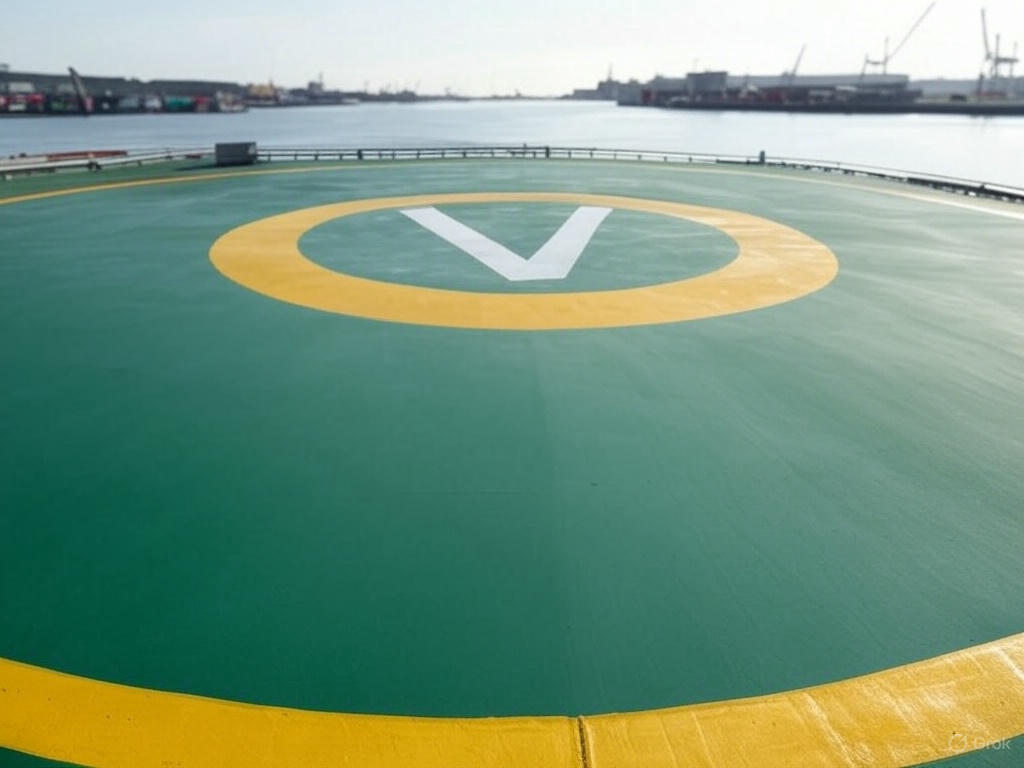Familiar Methods with New Approaches
Paths Diverge: Helipad vs Vertipad
As urban air mobility evolves, the infrastructure supporting it must adapt as well. Two key elements in this ecosystem are helipads and heliports compared to vertipads and vertiports. The suffix terms -pad or -port can generally be used interchangeably. While they serve similar functions—providing a landing and takeoff area for aerial vehicles specifically for rooftops and other elevated structures, like hospitals—their design, purpose, and requirements differ significantly. This article aims to shed light on these differences and why aluminum decking is a superior choice for both.
Material Choice: Aluminum Decking
Before diving into the differences, it’s crucial to highlight that aluminum is an excellent material choice for the decking of both helipads and vertiports. Aluminum offers a combination of strength, durability, and corrosion resistance, making it ideal for withstanding the mechanical stresses and environmental conditions these structures face.
Weight Considerations: Helicopters vs. eVTOL
Traditional helicopters are generally heavier than emerging Electric Vertical Takeoff and Landing (eVTOL) and Vertical Takeoff and Landing (VTOL) vehicles. As a result, the structural requirements for helipads are often more stringent than those for vertiports. The lighter weight of eVTOLs and VTOLs allows for more flexibility in vertiport design, potentially leading to cost savings. Importantly, the FAA published its first design guide for vertiport design standards on September 26, 2022, providing a regulatory framework that takes into account these weight considerations.
Lighting Systems
Both helipads and vertiports require specialized lighting systems to guide pilots during landing and takeoff. However, the design may differ slightly. Traditional helipads often use Touchdown and Positioning Markings (TDPM), usually represented by a circle and an ‘H’. Vertiports, on the other hand, may adopt a ‘Circle and V’ alignment, as these new-age vehicles may not have a helicopter’s distinctive shape that aligns with an ‘H’.
Fire Suppression Systems
One of the most significant differences between helipads and vertiports is the fire suppression system. Helipads often use foam monitors connected to a bladder tank system to combat fuel fires. In contrast, vertiports face the unique challenge of putting out battery fires, which are notoriously difficult to extinguish. Therefore, vertiports may require specialized fire suppression systems designed to ensure the safety of passengers and nearby individuals.
Refueling vs. Charging
Helipads are equipped with fueling stations for helicopters, but this system is irrelevant for eVTOLs, which run on electricity. Vertiports will need to replace traditional fueling systems with electric charging stations, adding another layer of complexity to their design and operation.
Infrastructure and Usage
Helipads are commonly found in locations like hospitals and are often used for luxury travel within a city. Vertiports, however, have the potential to democratize urban air travel. As eVTOLs become more prevalent, vertiports could evolve into something akin to bus stations or subway platforms, making air travel within a city more accessible to the general public.
Additional Considerations
- Noise Pollution: eVTOLs are generally quieter than traditional helicopters. This could have implications for where vertiports can be located, possibly allowing for more central locations within cities.
- Traffic Management: With the potential for higher frequency of flights, vertiports may require more advanced air traffic management systems compared to traditional helipads.
- Accessibility: As vertiports could become more like public transport stations, considerations for accessibility features like ramps, elevators, and signage will be important.
- Environmental Impact: eVTOLs produce fewer emissions compared to traditional helicopters, making them a more environmentally friendly option for urban air mobility.
- Security Measures: With increased usage, security protocols at vertiports may need to be more stringent, including baggage checks and identity verification systems.
- Operational Efficiency: With the advent of eVTOLs, there may be opportunities for more efficient scheduling and routing systems, leveraging data analytics and machine learning.
Conclusion
While helipads and vertiports serve similar purposes, the evolving landscape of urban air mobility necessitates different considerations for each. From material choice and lighting systems to fire suppression and refueling, understanding these differences is crucial for anyone involved in the design, construction, or operation of these essential infrastructures. As eVTOLs and VTOLs become more common, expect vertiports to play an increasingly significant role in shaping the future of urban transportation. Helidex is prepared to fill the upcoming gap in this market.

